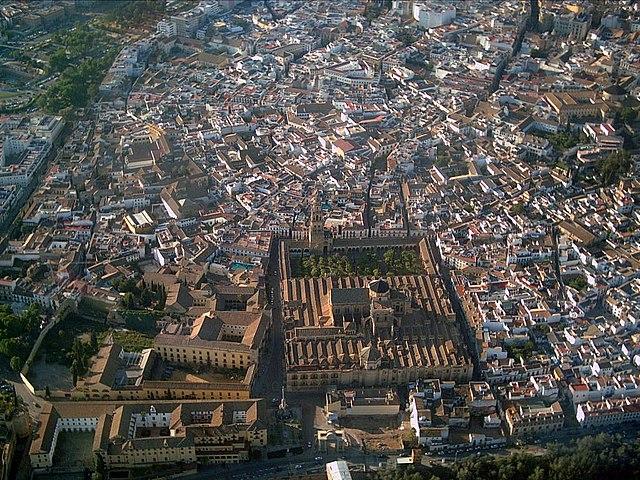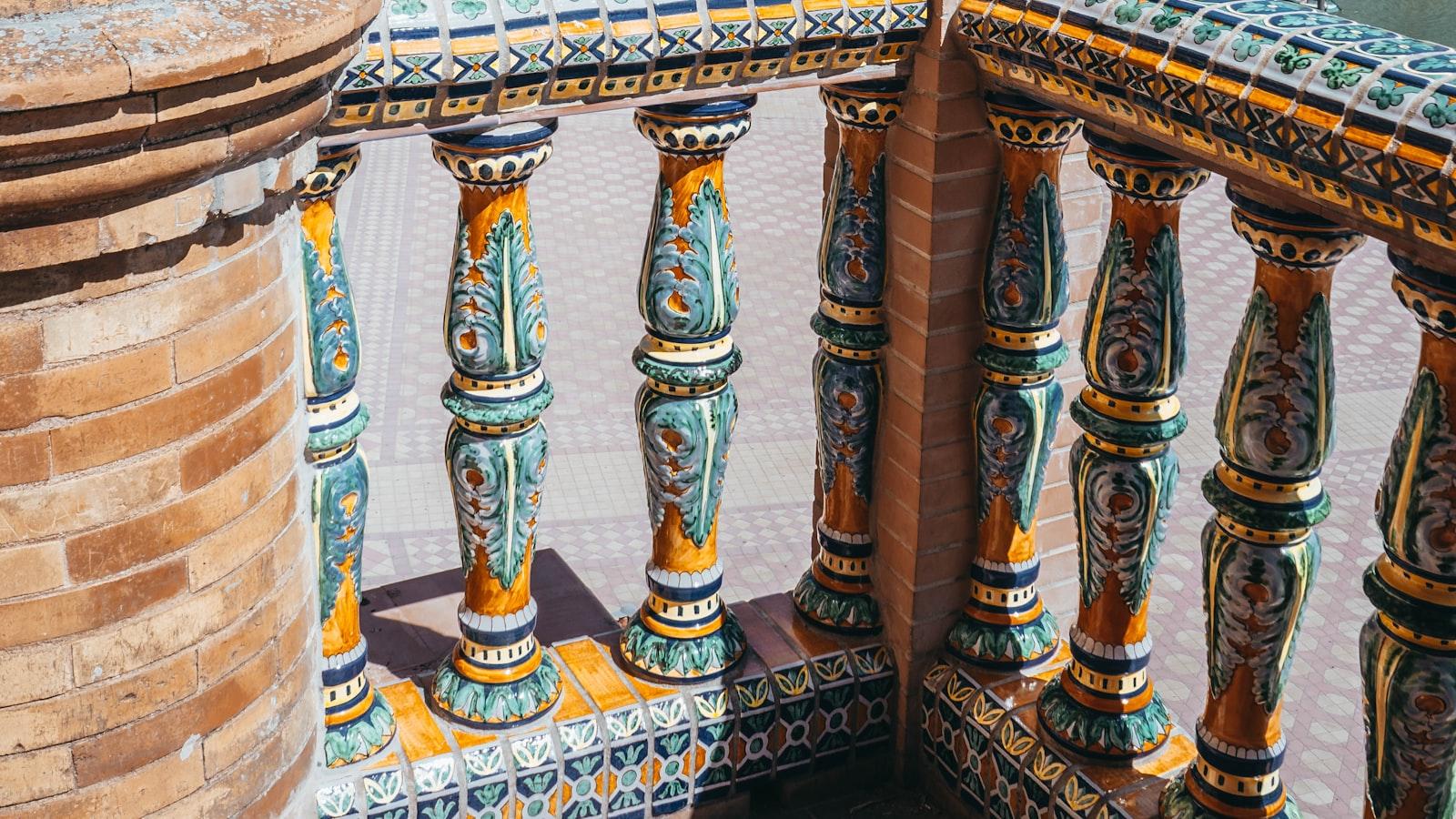In the march of time, cities rise and fall, their fortunes waxing and waning with the tides of history. Spain, with its rich tapestry of cultures and storied past, is no exception. From the time-worn stones of ancient fortresses to the shadowed alleys of medieval towns, the country’s landscapes are dotted with reminders of yesteryears. Among these historical gems are fascinating locales that once served as the nerve centers of power, the capitals of bygone epochs. Today, we embark on a journey through the annals of history to explore eight Spanish towns and cities that, though they may no longer command the political clout of their golden days, continue to wield the power of their heritage, inviting us to uncover the layers of time. These are places where every cobblestone and corner tells a story, where the echoes of the past are a whisper on the wind. Join us as we traverse the picturesque landscapes of Spain, exploring the once-capitals whose stories are as captivating as their beauty.
Exploring the Rich History of Spain’s Forgotten Capitals
Diving into the annals of history, we uncover a tapestry of cities and towns across Spain that once basked in the glory of being capitals. These places, now often overshadowed by the grandeur of Madrid, Barcelona, or Seville, hold within their streets and monuments the echoes of their past importance. From the Visigothic sway to the Muslim and Christian re-conquests, each of these erstwhile capitals tells a unique story, a forgotten chapter of Spain’s illustrious past.
Toledo, for instance, was not just the heart of the Visigothic Kingdom but also a significant cultural and religious center, where Christians, Jews, and Muslims once coexisted, contributing to an unparalleled intellectual bloom. Similarly, Córdoba, under the Umayyad Caliphate, emerged as a beacon of learning and sophistication, boasting one of the largest libraries of the Old World. The list extends to include:
- León: Once the capital of the Kingdom of León, it played a pivotal role in the Reconquista.
- Granada: Last bastion of the Nasrid dynasty, renowned for the majestic Alhambra.
- Valladolid: A key location in the Castilian court, also known as the place where Columbus died.
- Segovia: Famous for its Roman aqueduct and its status as a regal residence.
- Saragossa (Zaragoza): Capital of the Taifa of Zaragoza, known for the Aljafería Palace.
- Santiago de Compostela: The culmination point of the Camino de Santiago, it briefly enjoyed the status of the capital during various historical periods.
| City/Town | Era | Significance |
|---|---|---|
| Toledo | Visigothic Period | Cultural and religious center |
| Córdoba | Umayyad Caliphate | Center of learning and culture |
| León | Kingdom of León | Crucial in Reconquista |
| Granada | Nasrid Dynasty | Alhambra Palace |
| Valladolid | 15th-16th Century | Christopher Columbus’ death place |
| Segovia | Medieval Period | Roman aqueduct and royal palace |
| Saragossa (Zaragoza) | Taifa of Zaragoza | Aljafería Palace |
| Santiago de Compostela | Medieval Pilgrimage | Camino de Santiago endpoint |
Unearthing the stories of these once-celebrated capitals does not only offer a glimpse into Spain’s fragmented yet fascinating history but also invites us to appreciate the depth and diversity of Spanish heritage, extending beyond its current political centers to the very heart of its historical essence.
Unveiling the Hidden Gems of Spain’s Past Regal Seats
From the rugged landscapes of Asturias to the sun-soaked plains of Andalusia, Spain is a tapestry woven with the threads of its diverse past. Among its modern-day metropolises and coastal retreats lie towns and cities that once bore the crown of capital status, each holding tales of glory, intrigue, and transformation. These erstwhile seats of power, though no longer the political heartbeats of Spain, remain enshrined in history, offering a window into the nation’s regal and tumultuous past. As we journey through cobblestone streets and under ancient arches, we uncover the rich heritage that these hidden gems have preserved beneath their contemporary facades.
- Toledo: Once the capital of the Visigothic Kingdom and later a vital cultural and political center under Moorish rule, Toledo’s labyrinthine lanes and monumental architecture narrate stories of a bygone era where Christians, Muslims, and Jews coexisted. The city’s majestic Alcázar and the transcendent beauty of the Santa María la Blanca Synagogue stand as testaments to its multifaceted history.
- Córdoba: In its heyday, Córdoba was the heart of the western Islamic empire and one of the most advanced cities in the world, renowned for its library, schools, and medical facilities. The mesmerizing Mezquita, with its forest of columns and striking arches, harks back to a time when Córdoba was the soul of enlightenment and learning in medieval Europe.
- Granada: The final stronghold of the Nasrid dynasty before the Reconquista, Granada is synonymous with the Alhambra. This grand palace complex, with its intricate Islamic art and serene Generalife gardens, whispers the last sighs of Moorish Spain and its cultural zenith.
- León: Crowned by its breathtaking Gothic cathedral, León served as the capital of the Kingdom of León, playing a pivotal role in the reconquest of Spain from the Moors. The city’s historical narrative is woven into the very fabric of its streets, where ancient Roman walls guard the memories of its illustrious past.
Intriguingly, each of these cities not only offers a glimpse into Spain’s royal episodes but also showcases the country’s ability to blend its historical treasures with the vibrancy of modern life. Their once pivotal roles in shaping the nation’s fate may have faded into the backdrop, but the legacy of their cultural, architectural, and historical contributions continues to dazzle visitors and locals alike, making them enduring capitals of the Spanish spirit.
A Traveler’s Guide to Rediscovering Spain’s Ancient Capitals
As you traverse the sun-soaked landscapes and delve into the vibrant culture of Spain, a journey through its historical capitals unveils layers of bygone eras, each whispering tales of glory, conquest, and transformation. These ancient capitals, though no longer holding their political power, remain etched in the architecture, streets, and the very air of the cities. From the Visigothic roots in Toledo to the Moorish splendor of Córdoba, each city offers a unique tapestry of history to explore.
- Toledo: Once the heart of the Visigothic kingdom, Toledo’s winding streets and imposing Alcázar are a testament to its rich history. It is a city where Christian, Jewish, and Muslim cultures coalesced, creating a unique artistic and architectural heritage evident in its synagogues, mosques, and churches.
- Córdoba: The stunning Mezquita, with its striking arches and intricate mihrab, stands as a symbol of the Islamic Golden Age in Spain. Córdoba’s influence as a cultural and economic center during the Caliphate highlights the blend of Moorish and Renaissance influences throughout the city.
- Granada: The breathtaking Alhambra with its detailed Islamic art and lush Generalife gardens encapsulates the zenith of Moorish rule in Spain. Granada’s strategic location, nestled between the Sierra Nevada mountains and the Andalusian plains, showcases the blend of cultures and histories that have influenced the city.
- Zaragoza: Dominated by the Basilica de Nuestra Señora del Pilar, Zaragoza’s Roman and Moorish past, along with its importance during the Spanish Baroque period, speaks volumes of its position as a crossroads of Spanish history.
| City | Period of Capital Status | Must-Visit Landmark |
|---|---|---|
| Toledo | Visigothic Era | Alcázar of Toledo |
| Córdoba | Umayyad Caliphate | Mezquita-Catedral de Córdoba |
| Granada | Nasrid Dynasty | Alhambra |
| Zaragoza | Roman and Moorish periods | Basilica de Nuestra Señora del Pilar |
Embarking on a journey through these venerable cities not only enriches your understanding of Spain’s multifaceted history but also offers a glimpse into the soul of its people. As you meander through cobblestoned paths, beneath ancient arches, or within the silent sanctuaries of historic mosques and cathedrals, you’re walking the same streets as monarchs, poets, and visionaries. Each city, with its celebrated landmarks and overlooked corners, invites you to rediscover Spain through the eyes of its former capitals, weaving together the past and present in a tapestry as vibrant and enduring as the nation itself.
Recommendations for an Unforgettable Journey Through Spain’s Former Capitals
Exploring Spain’s historic former capitals offers a unique tapestry of cultures, architecture, and stories. Each of these cities played a pivotal role in shaping the nation’s history and offers travelers an authentic glimpse into Spain’s glorious past. From the narrow, winding streets of Toledo, once the heart of political power under the Visigoths, to the vibrant, multicultural atmosphere of Cordoba, the medieval capital of the Umayyad Caliphate, these cities are treasure troves of historical and cultural riches. Toledo’s Alcázar and the Cordoba Mosque-Cathedral stand as testaments to the architectural ingenuity and religious significance that these cities once embodied.
For those eager to delve deeper into Spain’s historical tapestry, a journey through Granada, Valladolid, and Zaragoza reveals a spectrum of influences from Moorish to Christian monarchies. Granada enchants with the Alhambra, an exquisite example of Moorish art and a reminder of the city’s status as the last Muslim kingdom in Spain. Valladolid, once the residence of Spanish Kings, boasts of the ancient San Pablo Church and the National Sculpture Museum, offering a glimpse into the Renaissance era. Zaragoza, known for its joyous festivals and the breathtaking Basilica of Our Lady of the Pillar, showcases the enduring legacy of faith and tradition in Spanish culture.
- Granada: Don’t miss the Alhambra and Generalife, the pinnacle of Moorish architecture and garden design.
- Valladolid: Explore the historical core with its antique churches and the Royal Palace.
- Zaragoza: Experience the blend of Moorish influence and Christian landmarks, especially the Basilica of Our Lady of the Pillar.
| City | Notable Sites | Period as Capital |
|---|---|---|
| Toledo | Alcázar, Santa María la Blanca Synagogue | 6th-16th century |
| Cordoba | Mosque-Cathedral of Córdoba | 8th-10th century |
| Granada | Alhambra, Generalife | 13th-15th century |
| Valladolid | San Pablo Church, National Sculpture Museum | 15th-16th century |
| Zaragoza | Basilica of Our Lady of the Pillar | Various Periods |
Embark on a journey to these historical gems for an unforgettable exploration of Spain’s diverse heritage, and step back in time to discover the stories and legends that these former capitals preserve. Each destination offers a unique encounter with Spain’s past, inviting travelers to immerse themselves in the beauty, complexity, and enduring spirit of these entrancing cities.
Insights and Conclusions
As the sun sets on our journey through time and geography, exploring the forgotten capitals of Spain, we can only marvel at the tapestry of history woven by these eight remarkable towns and cities. Once at the heart of political power and cultural bloom, they now stand as serene guardians of their past glory, inviting travelers and history enthusiasts to uncover their stories. These locales, each with its unique charm and legacy, remind us that the currents of history flow deep, shaping and reshaping the landscapes of nations and identities. As we bid adieu to the storied streets and ancient echoes of these erstwhile capitals, let us carry forward the spirit of discovery, cherishing the layers of history beneath our feet and the endless narratives waiting to be told. Who knows which forgotten capital, with its tales of triumph and adversity, will next whisper its secrets to those willing to listen




